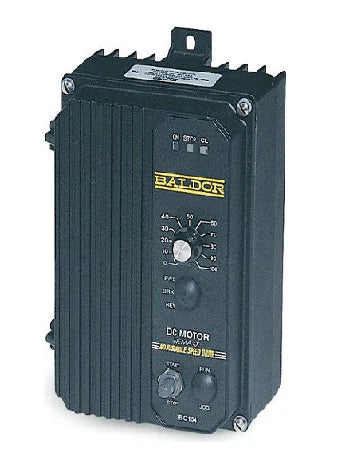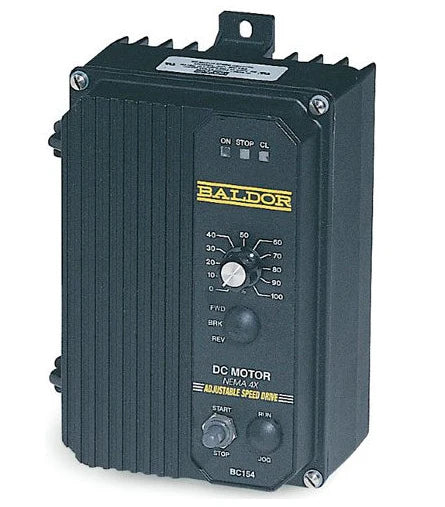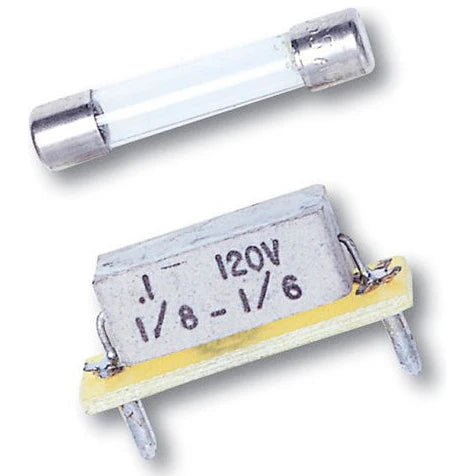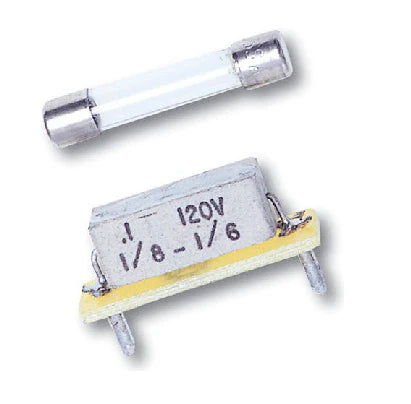
Share
The $47 Test That Saves $47,000
Megger testing explained (without putting you to sleep)
← Previous: "I Rewound 10,000 Motors So You Don't Have To"
A megger test costs $47.
Last week it saved a food processing plant $47,000.
The motor was "running fine." No weird noises. No smoke. Just spinning like it had been for 8 years.
But the megger said: "This motor will fail in 2-3 weeks."
They shut it down during their scheduled maintenance window. Replaced it with their spare. Sent the failing motor to us for rewind.
Two weeks later, we cut it open. The insulation was 90% gone. It was about 72 hours from catastrophic failure.
If it had failed during production? $47,000 in lost product, downtime, emergency service, and ruined batch.
All prevented by a $47 test.
What Even Is a Megger Test?
Let's start with what it's NOT:
- It's not checking if the motor runs (that's what the on/off switch is for)
- It's not checking voltage (that's what a voltmeter is for)
- It's not checking current (that's what an ammeter is for)
- It's not checking if Jerry remembered to grease the bearings (nothing can check that)
A megger test checks insulation resistance.
Which sounds boring. But it's actually the most important measurement you can take on a motor.
A megger sends high voltage (usually 500-1000V) through the motor windings and measures how much current leaks to ground.
Good motor: Almost no current leaks. High resistance. Big number on display.
Dying motor: Current leaking everywhere. Low resistance. Small number on display.
Dead motor: All current goes straight to ground. Zero resistance. Megger reads "0.00" and you cry.
Think of motor insulation like the coating on electrical wires in your house.
When it's new, it keeps electricity where it belongs. When it gets old, cracked, or contaminated, electricity starts leaking out.
In your house, this trips the breaker.
In a motor, this creates:
- Heat (because leaking current makes heat)
- More insulation damage (because heat damages insulation)
- More current leakage (because damaged insulation leaks more)
- More heat (you see where this is going)
This continues until the motor either:
- Trips on overload (lucky)
- Burns up spectacularly (expensive)
- Catches fire (very expensive + exciting)
The megger test catches this process BEFORE it becomes a problem.
How to Read Megger Results (Without a PhD)
When you megger a motor, you get a number. That number is measured in "megohms" (millions of ohms).
The rule is stupidly simple:
📊 Megger Reading Guide
Motor is healthy. Insulation is doing its job. No concerns. Test again in 6-12 months.
Motor is fine. Insulation is aging normally. Watch it. Test quarterly.
Motor is still running but insulation is degrading. Plan for replacement/rewind soon. Test monthly.
Motor is living on borrowed time. Could fail any day. Order replacement/plan rewind NOW. Test weekly.
Motor should not be running. Failure imminent. Shut it down. Replace immediately.
Motor is grounded. Already failed. Call us for rewind: (720) 626-9805
Here's what people mess up:
They test a motor once. It reads 25 megohms. They think "25 is a number. Numbers are fine."
Wrong.
25 megohms means the insulation is already 75% degraded. It's failing. Just slowly.
Single reading = snapshot.
Multiple readings over time = prediction.
Example trending scenario:
- January: 150 megohms (excellent)
- April: 145 megohms (still excellent, slight aging)
- July: 138 megohms (aging normally)
- October: 95 megohms (wait, what?)
That October reading is the alarm bell. Something changed. Moisture? Contamination? Thermal event?
This is when you investigate, not when it hits zero.
Real Examples: Catches We Made
Here are actual motors we tested in the last month:
🏭 The Compressor That Wasn't Fine
Customer: "Just test it to make sure it's good. No problems, just being thorough."
Our test: 4 megohms
Our response: "This motor is about to fail. Like, soon."
Customer response: "But it's running fine!"
Our response: "Yes. Until it doesn't."
They shut it down. Sent it in for rewind. We opened it up. The insulation was carbonized. Black. Brittle. It was weeks (maybe days) from total failure.
If it had failed: $85,000 (7 days downtime, emergency compressor rental, emergency rewind, overtime installation)
What they paid: $2,800 (scheduled rewind, normal turnaround, no drama)
Savings: $82,200 because they trusted a $47 test
🌊 The Pump That Lived Underwater
Background: Monthly megger testing as part of PM program.
Trending:
- Month 1: 180 megohms
- Month 2: 175 megohms
- Month 3: 45 megohms
Red flag. What changed?
Investigation: Motor was installed in outdoor pump house. Recent heavy rains. Water was getting in through conduit.
The fix: Dried out motor (recovered to 160 megohms). Fixed conduit entry. Added drain. Problem solved.
Cost: $400 (service call + minor repairs)
If we hadn't caught it: Motor fails from water damage in 2-4 weeks. $18,000 (emergency rewind + downtime + water system shutdown)
Savings: $17,600
🔥 The Motor That Was Literally Cooking Itself
Call: "Motor is running hot. Can you check it?"
Megger test: 12 megohms
Temperature measurement: Running 40°F over rated temp
The problem: Low insulation resistance was causing internal leakage current. Leakage current creates heat. Heat damages insulation more. Death spiral.
Customer wanted: "Can we just keep running it?"
Our answer: "You CAN. But it will fail. The only question is when and how expensive."
They ran it 3 more weeks. It failed catastrophically. Smoke. Sparks. Dramatic exit.
Emergency rewind cost: $6,800 (2.5x normal price for rush service)
If they'd shut down when we tested it: $2,400 (normal rewind)
Cost of ignoring the test: $4,400 extra
What Kills Insulation (And How Megger Catches It Early)
Motor insulation doesn't just fail randomly. Specific things kill it:
How it gets in: Condensation, leaky conduit, outdoor installation, flooding, Jerry power-washing the motor.
What it does: Water conducts electricity. Creates current paths through insulation. Corrodes copper.
Megger behavior: Sudden drop in readings. Often recovers if dried out quickly.
Prevention: Seal conduit entries. Use drain plugs. Don't install motors in pools.
How it happens: Overloading, poor ventilation, high ambient temperature, running motor in Jerry's sauna.
What it does: Insulation is basically plastic and varnish. Heat makes it brittle. Cracks develop. Insulation breaks down.
Megger behavior: Slow decline over months/years. Accelerates once damage starts.
Prevention: Don't overload motors. Keep cooling paths clear. Use motors in their rated temperature range.
How it gets in: Dust, chemicals, oil mist, carbon dust from brushes (if DC motor), general industrial nastiness.
What it does: Conductive contaminants create paths to ground. Some chemicals eat insulation.
Megger behavior: Gradual decline. Sometimes sudden if contamination event happens.
Prevention: Use proper enclosure type. TEFC for dirty environments. Keep motor clean.
How it happens: Misalignment, unbalance, loose mounting, running motor on trampoline (don't ask).
What it does: Vibration flexes windings. Insulation cracks. Copper strands break.
Megger behavior: Can be stable for a while, then sudden drop when cracks propagate to failure.
Prevention: Proper alignment. Fix vibration problems immediately. Tighten mounting bolts.
How it happens: Time. Thermal cycles. Normal degradation. Entropy.
What it does: Insulation slowly oxidizes and degrades. It's like aging. But for motors.
Megger behavior: Very gradual decline. Predictable. This is why trending works.
Prevention: You can't stop aging. But you can monitor it and act before failure.
The $47 vs $47,000 Math
Let's be specific about the economics:
Preventive Testing
Quarterly megger test
✓ Catch failures early
✓ Plan repairs
✓ Avoid emergencies
Reactive Failure
Unplanned downtime
✗ Emergency service rates
✗ Rush shipping
✗ Lost production
That $47,000 is a real number. Here's the breakdown for a typical manufacturing failure:
| Cost Item | Amount |
|---|---|
| Emergency service call (2 AM, weekend) | $800 |
| Rush rewind (3x normal rate) | $7,200 |
| Emergency installation | $2,500 |
| Lost production (3 days @ $12,000/day) | $36,000 |
| Spoiled product in process | $4,800 |
| Overtime labor for recovery | $3,200 |
| TOTAL | $54,500 |
Now compare that to the prevented failure scenario:
| Cost Item | Amount |
|---|---|
| Quarterly megger test (4x per year) | $188 |
| Detected failure early (test reading: 8 megohms) | $0 |
| Scheduled rewind during planned downtime | $2,400 |
| Normal installation | $800 |
| Lost production (scheduled 1-day window) | $12,000 |
| Spoiled product | $0 |
| Overtime labor | $0 |
| TOTAL | $15,388 |
ROI on testing program: 208:1
You spend $188/year on testing.
You save $39,000 on ONE prevented failure.
This is the easiest money you'll ever save.
How Often Should You Test?
Depends on how much you care if the motor fails:
- Critical motors (no backup, high downtime cost): Monthly
- Important motors (have backup, moderate downtime cost): Quarterly
- Non-critical motors (easy to replace, low downtime cost): Annually
- Jerry's test bench motor: Never (he'll just break the megger)
For trending to work, you need regular testing. Random tests are better than nothing, but regular intervals let you see patterns.
All motors >25 HP: Test quarterly minimum
Critical equipment: Test monthly
After any incident: Test immediately
Incidents that warrant testing:
- Motor overheated
- Tripped on overload
- Abnormal noise or vibration
- Lightning strike nearby
- Flooding or water exposure
- Motor removed and reinstalled
- Jerry said "I fixed it"
Can You Test Motors Yourself?
Yes. Should you?
Depends.
If you have:
- A good quality megger tester ($500-2,000)
- Someone trained to use it properly
- A system to record and trend results
- The discipline to actually do it regularly
Then yes, test your own motors.
If you have:
- A $30 megger from Amazon
- Jerry who "watched a YouTube video"
- A notebook that gets lost
- Good intentions but no follow-through
Then no, call us and we'll test them.
- Testing with motor still connected to power: Great way to blow up the megger. Disconnect ALL power first.
- Not discharging motor after test: Motor stores charge. Can shock you. Always ground windings after testing.
- Testing wrong thing: Test from winding to ground. Not winding to winding. Different measurement.
- Trusting cheap meggers: $30 megger is about as accurate as Jerry's excuses. Spend real money or don't bother.
- Single test, no trending: One reading tells you almost nothing. Trending tells you everything.
- Ignoring low readings: "8 megohms is still a number so it's fine." No. It's not fine. It's failing.
Want Us to Test Your Motors?
$47 per motor. Complete test report with trending analysis. Honest recommendations.
📞 Call: (720) 626-9805Or set up a quarterly testing program - we'll handle everything and alert you to problems before they become disasters.
The Part Where I Get Honest
Here's the thing about megger testing:
We make more money when motors fail.
Emergency rewind: $6,000-8,000
Scheduled rewind: $2,000-3,000
If every motor ran until catastrophic failure, we'd make 3x more money per motor.
But here's what we learned over 50 years:
Customers who prevent failures come back.
Customers who have emergencies... sometimes come back angry.
Sometimes don't come back at all.
We'd rather have 50 customers who trust us than 10 customers who got screwed by emergency pricing.
So we test motors. We tell people the truth. We recommend preventive maintenance even though it makes us less money.
Because long-term relationships are worth more than short-term profits.
This is business advice from a motor shop. Do with it what you will.
What You Should Actually Do
If you have motors worth more than $2,000 (installed value), you should megger test them.
Either:
- Do it yourself - Buy real megger, train someone, keep records, trend results
- Hire us to do it - $47/motor, we handle everything, you get reports
- Include it in PM program - We test quarterly, track trends, alert you to problems
Do not:
- Skip testing entirely and hope motors don't fail (they will)
- Test once and never again (trending is the point)
- Ignore low readings because motor still runs (it won't for long)
- Trust Jerry's testing (please)
Test motors regularly.
Track results over time.
Act on declining readings BEFORE failure.
Save enormous amounts of money.
It's not complicated. It just requires actually doing it.
Ready to Start Testing?
Call us. We'll test your motors. We'll explain what we find. We'll give you honest recommendations.
📞 Call: (720) 626-9805
No sales pressure. No BS. Just testing and truth.
Colorado Electric Motors - Testing motors since before it was cool.
P.S.
The $47,000 figure in the title is not exaggerated.
That's a real number from a real customer.
Food processing plant. 100 HP fan motor. Failed during production run.
3 days downtime + spoiled product + emergency service = $47,283
They now have a quarterly testing program.
P.P.S.
Jerry didn't actually try to test himself with a megger.
But he DID try to megger test a motor while it was still running.
The megger survived. Jerry's dignity did not.
We have it on security camera but we're not allowed to share it.
(HR said something about "professional environment" and "workplace dignity")
(We still watch it at holiday parties)
📺 NEXT EPISODE
"Bearings Don't Lie (But Your Maintenance Guy Might)"
Coming in 2 days... (Vibration analysis explained + why everything Jerry knows about bearings is wrong)








